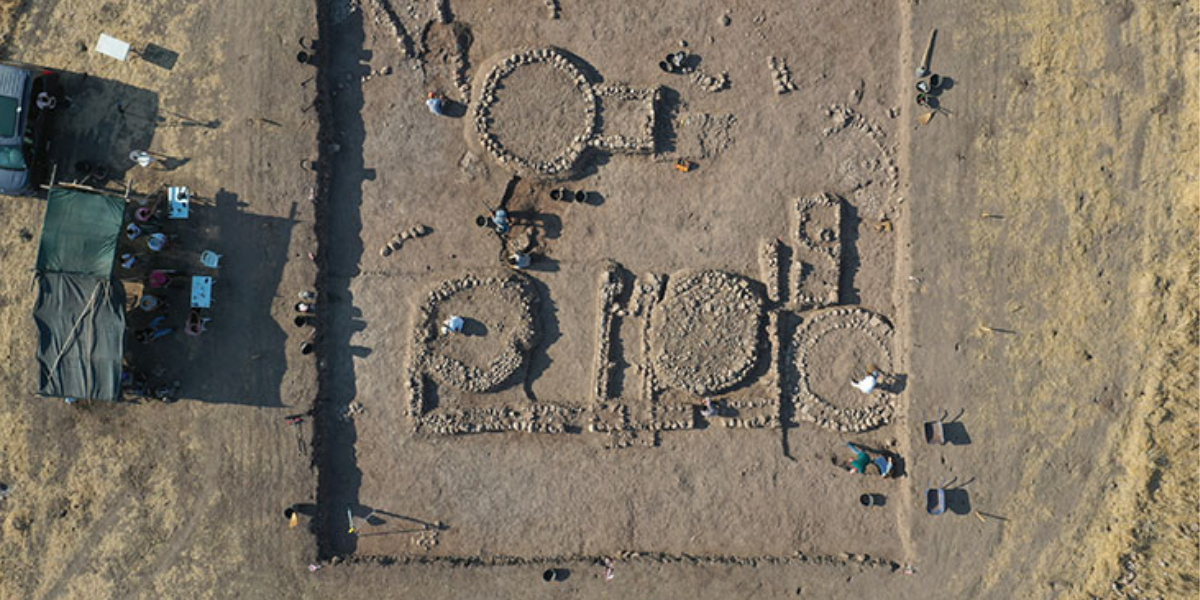
Child skeleton and silver ring dating back 7,600 years found at Domuztepe Mound
A child skeleton and a silver ring dating back 7,600 years were found in Domuztepe Mound, which has uninterrupted settlement traces since the Neolithic period.
Located in Emiroglu Village, 32 km south-southeast of the city center of Kahramanmaraş in southern Türkiye, Domuztepe mound lies on the eastern bank of the Aksu River in the Maras Plain.
The excavations continue under the coordination of the Ministry of Culture and Tourism under the direction of Hacettepe University Faculty of Letters, Department of Archaeology, Assoc. Prof. Dr. Halil Tekin.
The excavation team found the skeleton of a child in a layer dated to 7,600 years ago. The exact age of the skeleton will be determined after DNA studies and carbon 14 tests. A silver ring, thought to have been used for babies, was found in the same layer.
📣 Our WhatsApp channel is now LIVE! Stay up-to-date with the latest news and updates, just click here to follow us on WhatsApp and never miss a thing!!

Head of Excavation Assoc. Prof. Dr. Halil Tekin told AA correspondent that two human skeletons, one a baby and the other 6-7 years old, were found in the same area about 10 days ago.
Explaining that a new child skeleton was found in the layer 7,600 years ago, Halil Tekin said that it is an important success to find these children’s graves around the keyhole-shaped structure known as ‘Tholos’ in archaeology.
“We were actually expecting this grave because we found the remains of a hearth on the east side. It is already a rule in archaeology. From the Stone Age to the later periods, if you find a hearth, the expectation of a baby or child grave inside or outside the house increases. It was with this expectation that we came across the grave.”

Stating that the newly found child skeleton and silver baby ring date back to 7,600 years ago, Tekin pointed out that the expectations increase as the work continues, and said that a surprise can always be encountered under the soil.
Cover Photo: AA
You may also like
- A 1700-year-old statue of Pan unearthed during the excavations at Polyeuktos in İstanbul
- The granary was found in the ancient city of Sebaste, founded by the first Roman emperor Augustus
- Donalar Kale Kapı Rock Tomb or Donalar Rock Tomb
- Theater emerges as works continue in ancient city of Perinthos
- Urartian King Argishti’s bronze shield revealed the name of an unknown country
- The religious center of Lycia, the ancient city of Letoon
- Who were the Luwians?
- A new study brings a fresh perspective on the Anatolian origin of the Indo-European languages
- Perhaps the oldest thermal treatment center in the world, which has been in continuous use for 2000 years -Basilica Therma Roman Bath or King’s Daughter-
- The largest synagogue of the ancient world, located in the ancient city of Sardis, is being restored











Leave a Reply